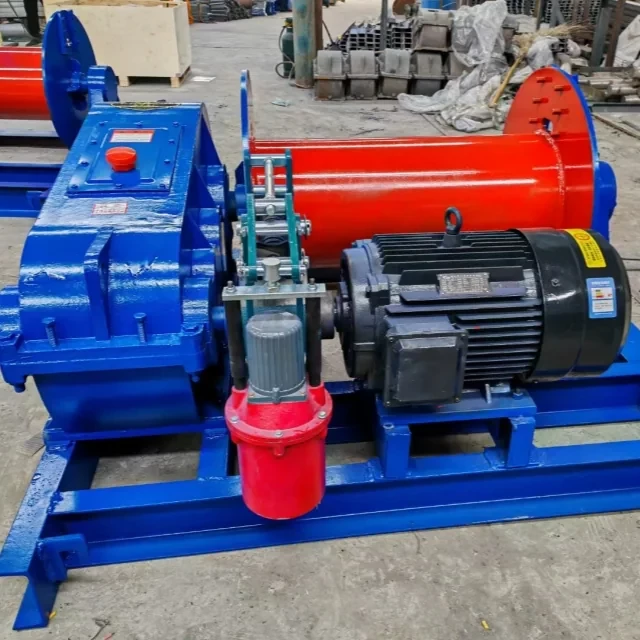Introduction
Hoist brake failures account for nearly 23% of crane-related accidents (OSHA data), often stemming from improper adjustments. This guide demystifies compliant hoist brake calibration—from core mechanics to OSHA-aligned validation—ensuring your equipment operates at peak safety. Whether you're maintaining construction winches or industrial lifts, these protocols apply universally.
Hoist Brake System Fundamentals
Critical Components Requiring Precision Adjustment
Hoist brakes rely on three interdependent elements:
-
Brake Drum/Shoe Interface
- Worn or misaligned surfaces reduce friction by up to 40%, requiring gap adjustments within 0.5mm tolerance.
-
Spring Tension System
- Over-tightening springs causes premature wear; under-tightening risks slippage.
-
Control Linkages
- Loose cables or hydraulic leaks delay engagement, violating ANSI B30.2 response-time standards.
Ever noticed uneven brake pad wear? That’s often a tension imbalance warning.
Consequences of Non-Compliant Modifications
- Catastrophic Load Drops: 62% of hoist failures occur during descent due to inadequate holding torque.
- Regulatory Penalties: OSHA citations for uncalibrated brakes exceed $15,000 per violation.
- Equipment Degradation: Improper adjustments accelerate drum warping, doubling replacement costs.
Professional Adjustment Methodology
Step-by-Step Calibration Process
-
Pre-Adjustment Inspection
- Measure lining thickness (replace if
- Check for oil contamination (reduces friction coefficient by 35%).
-
Spring Load Calibration
- Use a torque wrench to set tension per the manufacturer’s specifications.
- Example: Garlway winches typically require 110–130 N·m for optimal engagement.
-
Gap Synchronization
- Insert feeler gauges between drum and shoe (0.3–0.5mm ideal for most models).
Pro Tip: Mark reference points on adjustment nuts to track changes visually.
Post-Adjustment Validation Testing
- No-Load Test: Verify instant brake engagement when controls are released.
- Load Test: Lift 125% rated capacity (per ANSI B30.2) and confirm zero drift over 10 minutes.
- Heat Cycle Test: Operate through 20 stop/start cycles to check consistency.
Industry Compliance Framework
OSHA/ANSI Safety Standards Reference
- OSHA 1926.550: Mandates monthly brake inspections for construction hoists.
- ANSI B30.2-2021: Requires load testing post-adjustment and annual recertification.
Maintenance Documentation Requirements
- Inspection Logs: Must include adjustment dates, technician signatures, and torque values.
- Non-Conformance Reports: Document any deviations (e.g., "Left spring required 5% over-torque to compensate for wear").
Conclusion & Actionable Next Steps
Hoist brake safety isn’t optional—it’s a calculable defense against downtime and disasters. For teams managing Garlway equipment or similar machinery:
- Schedule Immediate Inspections if adjustments haven’t been validated in 30 days.
- Invest in Certified Training—70% of adjustment errors stem from untrained personnel.
- Standardize Checklists using OSHA’s sample templates for consistent audits.
Your brakes aren’t just stopping loads; they’re protecting lives. Treat every adjustment with the precision it demands.
Related Products
- Portable Concrete Mixer Machine Equipment for Mixing Concrete
- Electric Hoist Winch Boat Anchor Windlass for Marine Applications
- Commercial Construction Mixer Machine for Soil Cement Mixing Concrete
- Hydraulic Concrete Mixer Machine Cement Mixing Equipment for Mixture Concrete
- Ready Mixer Machine for Construction Ready Mix Machinery
Related Articles
- How to Prevent Buffering Component Failures in Concrete Mixing Cylinders: Proactive Strategies That Work
- How to Protect Concrete Mixing Stations From Extreme Weather Damage
- How to Operate Concrete Mixing Stations in Winter: Protecting Equipment and Ensuring Quality
- How to Verify Fasteners and Connectors in Concrete Mixers: A Safety-First Approach
- Optimizing Infrastructure Efficiency: How to Choose Between Concrete and Stabilized Soil Mixing Plants




















